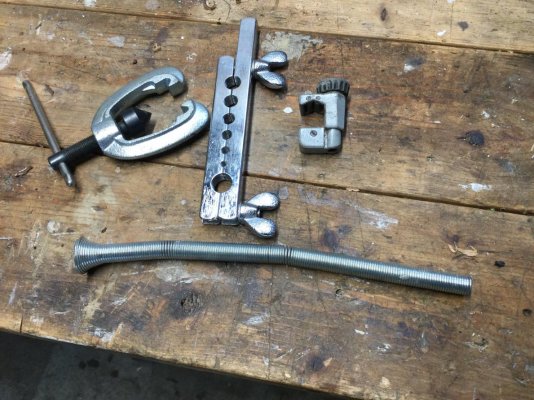twistedtree
Guru
This is true. However, if you are doing maintenance and repair on fuel or hydraulic lines its prudent to do a bit of research and careful looking before just slapping any old fitting into your system. It can not be assumed that every hydraulic or fuel fitting on a boat will be SAE45. Especially on newer modern boats or boats that have been refit.
A good example is the dual Racor filters. If you install one its almost certainly going to come with 37 degree steel male fittings. You can get a few models with female (I think NPT) and of course could put in 45 degree. But the vast majority that have the 4 way valve come with the 37 degree male steel fitting. See port size at bottom of page in this link. Or check Parkers web site.
https://www.westmarine.com/racor-ma...8e0WcmUnMAoboKUBzMEDVNTh8PChwPTYaAi29EALw_wcB
37 degree sleeve type flare (the best kind over single piece) can be found at McMaster Carr for very reasonable prices https://www.mcmaster.com/37-degree-flares/
If you are going to be making a flare on something that could be removed and installed on a regular basis, or may have to be replaced due to failure, I HIGHLY recommend using a 37 degree flare with a sleeve.
Twisted Tree- I understand your sentiments regarding the next guy. It is a very valid point to take into consideration. Heck...it doesnt even have to be the next guySometimes it THIS guy..lol.
But I personally dont like to limit my choices based on that principle alone. I also think its better to discuss all options and make informed decisions.
I will be doing my autopilot upgrade soon. The old autopilot is dead long ago but the pump is still plumbed in. There are 2 places that the hydraulics have a very subtle weep I have since cranked down on those 45 degree fittings to essentially stop the weep. But when the new system goes in it will definitely have the 37 degree sleeved fittings in every area I touch. As far as the next guy. You can label fittings just as easily as you do electrical wiring.
Well, I can't disagree with assessing the whole project and making an informed decision.... I more meant to caution people who are not familiar with the difference between the two, and possibly incompatibilities. I know I bought a bunch of unnecessary fittings and did a lot of head scratching and reading before I figured it out.
Those sleeves are interesting. I have only used JIC 37 hydraulic fittings, never that style copper fittings.

